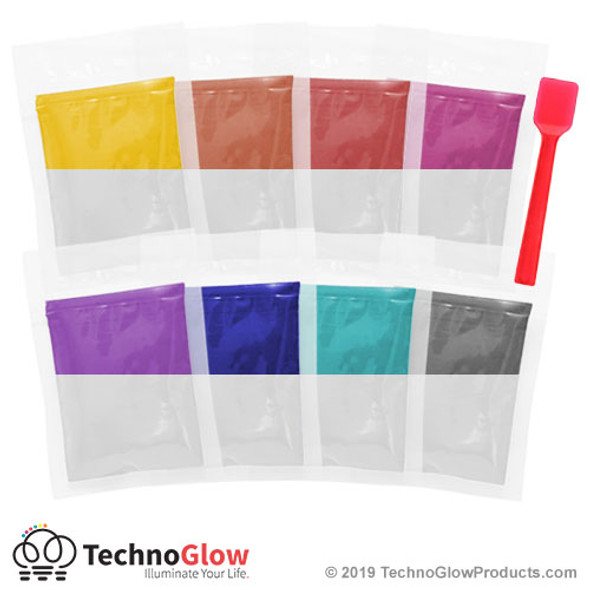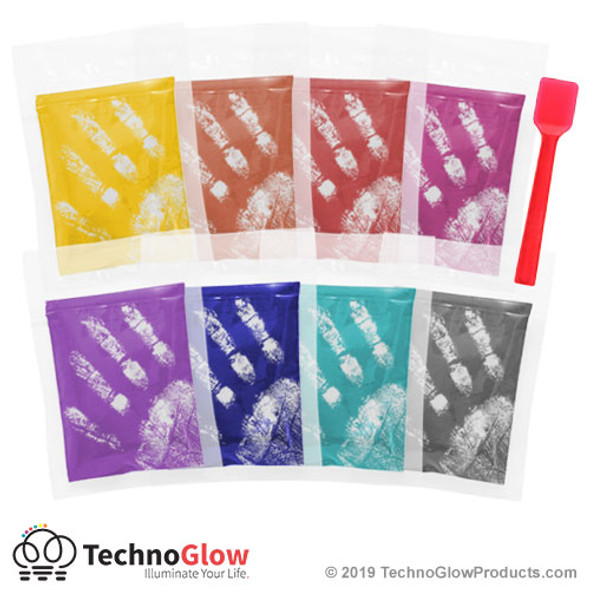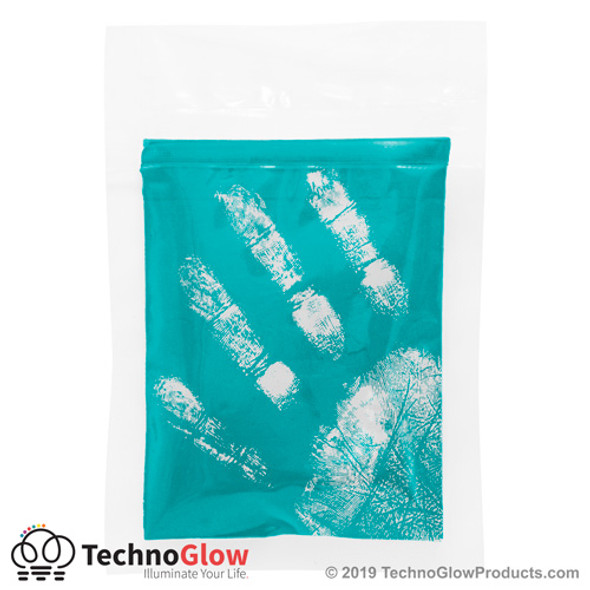Thermochromic Pigment
Thermochromic pigment change color or become invisible at a particular temperature in this case 25°C (77°F). Some may refer to thermochromic pigments as "heat sensitive pigments". Limitless combinations and effects can be achieved with thermochromic powder.
-


Thermochromic Pigment Kit - 8 Pack (25°C / 77°F)
TechnoGlow
$70.00 - $300.00Kit includes (x8) samples your size choice of color to colorless thermochromic pigments and (x1) anti-static pigment scoop. Colors include yellow, orange, red, magenta, purple, blue, aqua, and black. This high grade thermochromic pigment...T25-SAM-C$70.00 - $300.00 -


Black Thermochromic Pigment (25°C / 77°F)
TechnoGlow
$10.00 - $50.00Thermochromic black powder has a reactivity point of 25°C / 77°F with a very fine and fluffy consistency. In temperatures cooler than the reactivity point it is a pastel black/gray powder which looks similar to soot or ash. This color is not UV...T25-BLK-C$10.00 - $50.00 -


Red Thermochromic Pigment (25°C / 77°F)
TechnoGlow
$10.00 - $50.00Thermochromic Red powder with a reactivity point of 25°C / 77°F. Transparent powder, which can look white in denser volumes when exposed to temperatures warmer than the reactivity point. In temperatures cooler than the reactivity point it is...T25-RED-C$10.00 - $50.00 -


Blue Thermochromic Pigment (25°C / 77°F)
TechnoGlow
$10.00 - $50.00This powder is a very deep blue color in temperatures under 25°C / 77°F. It is very light and fluffy, mixing smoothly into just about any medium. It is not UV light sensitive like some of the other pigments and will really have no noticeable...T25-BLU-C$10.00 - $50.00 -


Yellow Thermochromic Pigment (25°C / 77°F)
TechnoGlow
$10.00 - $50.00This powder is very bright yellow in temperatures under 25°C / 77°F. It is fine and fluffy, with such a rich color that it looks very similar to pollen. Under a black light it will really POP out at you in the same way a neon or fluorescent...T25-YLW-C$10.00 - $50.00 -


Aqua Thermochromic Pigment (25°C / 77°F)
TechnoGlow
$10.00 - $50.00This heat sensitive aqua pigment has a very deep blue/green color in in temperatures below 25°C / 77°F. It is not reactive to UV light, but still has a variety of uses. It's fine, fluffy consistency will mix smoothly into a variety of...T25-AQU-C$10.00 - $50.00 -


Purple Thermochromic Pigment (25°C / 77°F)
TechnoGlow
$10.00 - $50.00This powder is a very deep purple color in temperatures under 25°C / 77°F. It has a fine and fluffy consistency. It is not UV reactive and will have no noticeable changer under a black light. The real magic happens when the powder comes in...T25-PPE-C$10.00 - $50.00 -


Orange Thermochromic Pigment (25°C / 77°F)
TechnoGlow
$10.00 - $50.00Thermochromic Orange powder with a reactivity point of 25°C / 77°F. Transparent powder, which can look white in denser volumes when exposed to temperatures warmer than the reactivity point. In temperatures cooler than the reactivity point it...T25-ORE-C$10.00 - $50.00 -


Magenta Thermochromic Pigment (25°C / 77°F)
TechnoGlow
$10.00 - $50.00Thermochromic Magenta powder with a reactivity point of 25°C / 77°F. Transparent powder, which can look white in denser volumes when exposed to temperatures warmer than the reactivity point. In temperatures cooler than the reactivity point...T25-MAG-C$10.00 - $50.00
Mixing Ratios
Mixing ratios for Thermochromic pigments are largely a matter of customer preference. There is no baseline standard for mixing into various mediums. The ratios below are recommended starting points, but can always be altered to taste. Remember, the less pigment you add to your medium the more transparent it will appear. The more pigment you add the more opaque it will appear. Adding more pigment to a particular medium, especially more than 50% may alter the way the medium performs, dries, or sets. It is always best to test a small amount in a controlled environment before mixing a large masterbatch.
Paint: 1% - 5%
Plastic Injection: 0.5% - 2%
Adhesives & Sealers: 2% - 5%
Make Glow in the Dark Slime
Add 1-2 teaspoons of Thermochromic pigment to every cup of slime. 1 Ounce of Thermochromic pigment contains roughly 8 tablespoons (24 teaspoons) of pigment. Food coloring can be added to enhance the transition from one color to another.
